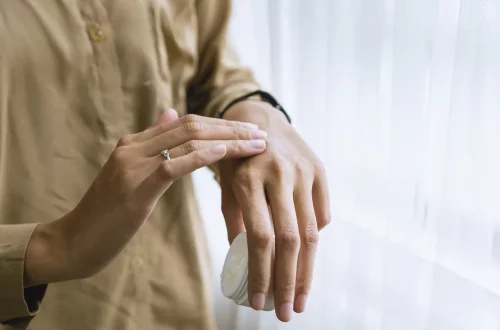
Easy Steps for Waxing Legs at Home for Smooth Skin
Achieving smooth skin is a goal many strive for, and one effective method to reach this is leg waxing. While salon visits can be convenient, they often come with a hefty price tag. Fortunately, waxing your legs at home can be an easy and cost-effective alternative. It allows you to take control of your grooming routine, ensuring that you achieve the desired results on your own terms. By following the right steps and utilizing the proper techniques, you can enjoy silky-smooth legs without the hassle of salon appointments.
Home waxing offers several benefits, including flexibility and convenience. You can choose your own time, ensuring that you don’t feel rushed or pressured. Additionally, it can be a fun and empowering experience. With the right products and a bit of practice, you too can master the art of waxing. However, it’s essential to understand the process and prepare adequately to achieve the best results. This article will guide you through simple steps and tips to ensure your at-home waxing experience is as smooth as your skin will be afterward.
Choosing the Right Wax for Your Skin Type
Selecting the right type of wax is crucial for a successful leg waxing experience. There are generally two main types of wax: soft wax and hard wax. Soft wax is applied in a thin layer and is removed using cloth strips. On the other hand, hard wax is applied thicker and hardens on the skin, allowing it to be removed without strips. Each type has its advantages and may work better for different skin types.
Soft wax is ideal for larger areas of skin, like the legs, as it adheres well to fine hair and can remove multiple hairs at once. However, it can be more painful, especially for those with sensitive skin. If you have sensitive skin or are prone to irritation, hard wax may be a better option. It’s gentler on the skin and is less likely to cause redness or discomfort.
In addition to the type of wax, consider the ingredients. Many waxes are formulated with soothing agents such as aloe vera or chamomile, which can help minimize irritation and provide a calming effect on the skin. If you have sensitive skin or allergies, always check the ingredients list to avoid any adverse reactions.
If you’re uncertain about which wax to choose, consider starting with a wax kit designed for beginners. These kits often come with everything you need, including wax, applicators, and strips, making the process more straightforward. Ultimately, selecting the right wax tailored to your skin type will enhance your waxing experience and ensure effective hair removal.
Preparing Your Skin Before Waxing
Preparation is key to achieving the best results when waxing your legs. Before you start, ensure your skin is clean and dry. Take a shower to wash away any dirt, oil, or lotion that could interfere with the waxing process. After showering, gently exfoliate your legs using a mild scrub or a loofah. This will help remove dead skin cells and prevent ingrown hairs, allowing the wax to adhere better to the hair.
Once your skin is clean and exfoliated, it’s essential to make sure it’s completely dry. Any moisture can cause the wax to slide off rather than adhere to the hair. You might want to dust a light layer of talcum powder over the areas you plan to wax. This helps absorb any remaining moisture and creates a barrier that allows the wax to grip the hair better.
Additionally, it’s a good idea to do a patch test, especially if you’re using a new wax or have sensitive skin. Apply a small amount of wax to a discreet area, such as your inner thigh, to see how your skin reacts. Wait 24 hours to check for any adverse reactions before proceeding with waxing your legs.
Lastly, gather all your supplies before you start. Have your wax, applicators, strips (if using soft wax), soothing lotion, and any other tools you might need readily available. This preparation will help streamline the process and ensure you have everything you need within arm’s reach.
Mastering the Waxing Technique
Once you’ve selected the right wax and prepared your skin, it’s time to master the technique of waxing. First, read the instructions on the wax packaging carefully. Each wax may have specific recommendations for application and removal, so it’s essential to follow those guidelines.
For soft wax, use a wooden spatula to apply a thin, even layer of wax in the direction of hair growth. Be sure not to apply the wax too thick, as this can make it harder to remove. Place a cloth strip over the wax, pressing down firmly and leaving a small section at the end for gripping.
To remove the strip, hold your skin taut with one hand and use the other hand to pull the strip off quickly in the opposite direction of hair growth. A quick motion is key to minimizing discomfort and ensuring effective hair removal. If you’re using hard wax, apply a thicker layer and wait for it to cool and harden slightly before pulling it off.
After you’ve waxed an area, take a moment to soothe your skin. Apply a calming lotion or gel to reduce redness and irritation. Aloe vera gel is an excellent option, as it has natural soothing properties. Avoid hot baths, tight clothing, or vigorous exercise for at least 24 hours after waxing to give your skin time to recover.
If you notice any missed spots, you can go back over them with a small amount of wax, but be cautious not to over-wax the same area, as this can lead to irritation. With practice, you’ll become more confident in your technique, making the process quicker and more efficient.
Aftercare for Smooth and Healthy Skin
Post-waxing care is just as important as the waxing process itself. Proper aftercare helps to soothe the skin and ensure that your legs remain smooth and healthy. After waxing, it’s essential to keep the skin clean and moisturized. Use a gentle, fragrance-free moisturizer to hydrate your skin. This will help prevent dryness and irritation that can occur after waxing.
Avoid sun exposure for at least 24 hours after waxing, as your skin may be more sensitive and prone to sunburn. If you must go outside, wear sunscreen to protect your skin. Additionally, refrain from hot baths, saunas, or swimming in chlorinated pools for a couple of days following your waxing session. These activities can irritate your skin and lead to discomfort.
To prevent ingrown hairs, consider using a gentle exfoliating scrub a few days after waxing. This will help remove dead skin cells and keep the hair follicles clear. It’s best to exfoliate gently, as aggressive scrubbing can irritate freshly waxed skin.
If you experience any redness or bumps after waxing, don’t panic; this is common and usually subsides within a few hours. However, if irritation persists or worsens, consider consulting a dermatologist. They can provide guidance on how to care for your skin and recommend suitable products.
Remember, everyone’s skin reacts differently, so it’s essential to listen to your body. With the right aftercare, you can enjoy smooth, beautiful legs for weeks to come.
—
This article is for informational purposes only and does not constitute medical advice. If you have any health concerns or skin conditions, please consult a healthcare professional.




